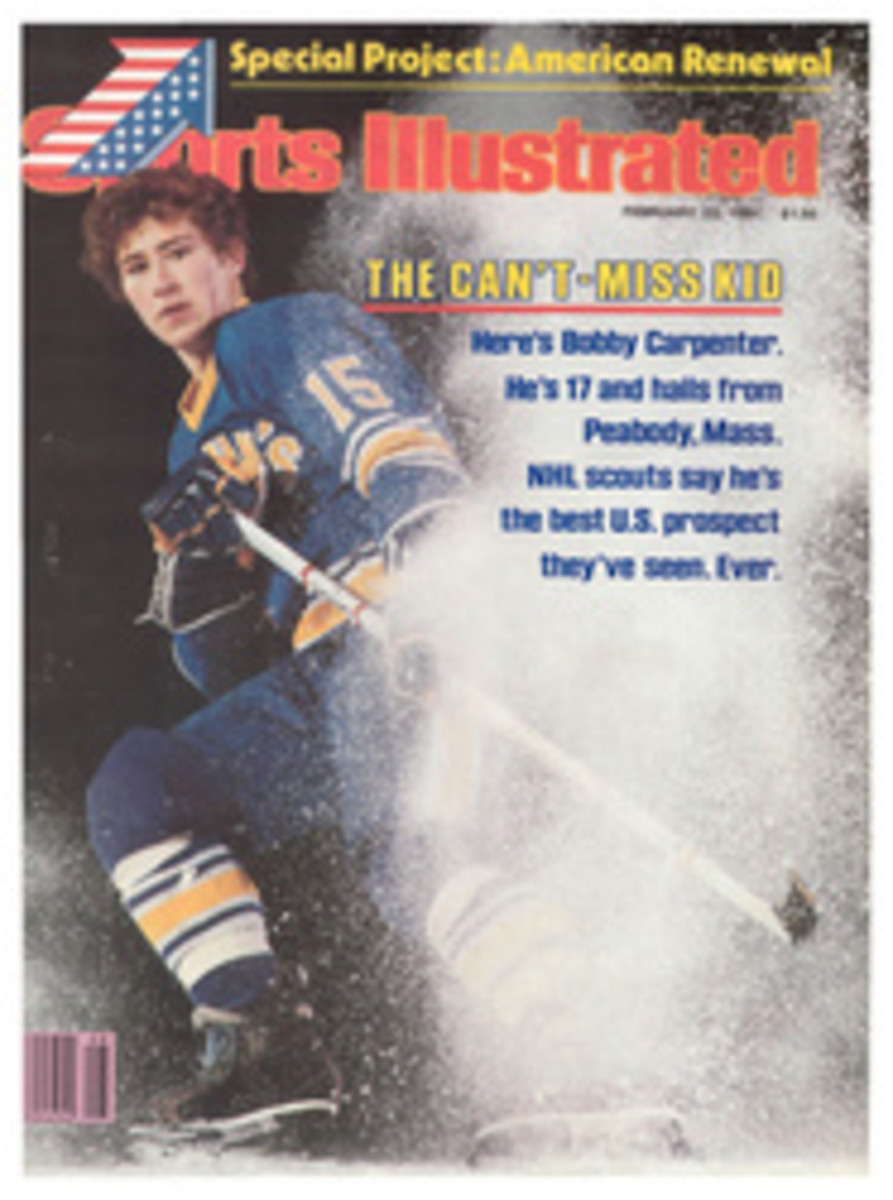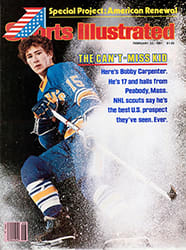
Tops in the litigation derby
The two most interesting 3-year-olds of the California winter racing season are stabled no more than 50 yards apart at the northwest corner of the Santa Anita backstretch. The massive bay colt—he stands about 16 hands 3 inches, and he's still growing—housed in Barn 118 is regally bred and is valued at more than $1 million, though his career to date consists of only two races. His name is Flying Nashua and his famous father. Nashua, was not only a millionaire racer himself in the mid-1950s but remains a prolific sire today at a pensioner's age of 29.
Located not far from Flying Nashua in Barn 119 is a steel-gray colt by an undistinguished sire named Lord Stapleton, who won only two races and $8,195 during three injury-marred seasons at minor league tracks. Two years ago a veterinarian recommended that Lord Stapleton's first racing son be humanely destroyed; 11 months ago the colt was sold at auction for $2,500. Originally, the gray 3-year-old was named Cow Buyer: today he is Johnlee n' Harold. Nobody knows for certain who owns Johnlee n' Harold, but speculation ties him to the principal figure in boxing's latest scandal. Unfortunately, these two Triple Crown-bound horses may, because of bizarre circumstances, never meet in a race.
On a forbidding afternoon last week, Flying Nashua drove down the long Santa Anita stretch to win the West's first important 3-year-old race of the year, the $67,450 San Vicente Stakes, by a nose. Where, one might wonder, did Johnlee n' Harold finish? Just where he started, in Barn 119. Johnlee n' Harold had been entered in the San Vicente but was scratched by order of the stewards because of the questions about his ownership. The registration papers on Johnlee n' Harold indicate that he's the property of Michael I. Blake, an employee of Muhammad Ali Professional Sports Inc. But since Johnlee n' Harold won the $93,400 California Breeders' Champion Stakes in December for his second straight victory, it has been many observers' impression that he's actually owned by Harold J. Smith, the mysterious boxing promoter of MAPS who is suspected of having galloped off with $21.3 million belonging to the Wells Fargo Bank. In any case, the question of whether the colt's racing career continues will be decided by either the courts or the California Horseracing Board, and they had better get the giddy-up on: Johnlee n' Harold has been nominated to the $60,000 Gold Rush Stakes at Golden Gate this week, the Santa Anita Derby in April and the Kentucky Derby in May.
Normally, Southern California racing goes about its booming business with nary a ripple to stir its placid pond. However, Johnlee n' Harold and Flying Nashua have been stirring up ominous waves in Have-a-Nice-Day land.
As the 1980 California season neared its conclusion, five major 2-year-old stakes races had been run and each had produced a different winner, only one of them the favorite. And when Johnlee n' Harold beat 13 more fashionably bred opponents in the California Breeders' Champion Stakes, it was the final straw. In its previous two runnings the race had been won by excellent horses. Jaklin Klugman and Flying Paster. What on earth was a Johnlee n' Harold doing in the winner's circle?
After all, he'd been bred and foaled on a five-acre farm owned by Richard L. Brown near San Diego. While cavorting in a field one day, he injured himself when he fell over backwards and his withers got knocked into his shoulder. Brown disdained a vet's advice to "put the colt down" and readied him for sale in March of 1980. The horse went under the hammer at Hollywood Park for $2,500 to Bill Esquivel of Los Angeles.
One morning three months later, a man saw Cow Buyer, as Brown had named the gray colt, work out at Hollywood and offered Esquivel a staggering $25,000 for him. According to Esquivel, that man was Harold Smith, who eventually paid $32,000 in cash for the colt. Smith's wife is called Lee. and his son is named John. The colors Johnlee n' Harold raced under were black with a pair of gray boxing gloves. Naturally, it was assumed around the track that Smith, not Blake, owned the colt.
In his first start at Del Mar. Johnlee n' Harold beat only one of 10 opponents, and shortly thereafter he got a new trainer, Hal King. "I knew he was something special the first time I saw him," says the 60-year-old trainer. King bought his first racehorse at Hollywood Park in 1947 for $500, and a few years later went to Mexico to, as he says, "learn the culture, the people and the language." While in Mexico City he met the leading trainer there, Lazaro Sosa Barrera, and they became fast friends. After King returned to California, Barrera followed and the two worked the same stable. King was the groom, Barrera the hot-walker.
King's subsequent career as a trainer hasn't been as successful as that of the renowned Barrera, though two years ago King finished third in the trainer standings at Santa Anita, a remarkable achievement for a man who runs essentially a claiming stable. That's why the controversy surrounding Johnlee n' Harold obviously hurts him. "I have never been to a Kentucky Derby," says King. "Laz Barrera invited me when he ran Bold Forbes and Affirmed, but I didn't go because I decided a long time ago I'd go only if I had a horse I could take there. I've got one now but I don't know whether I'll ever get there."
Years ago in a Catholic church in Mexico City, King, a Jew, put his hands on a boy's head and promised he would watch over the child should anything happen to his father. "It was one of the proudest moments of my life," King says. The boy was Laz Barrera's son, Larry. Young Barrera, 20, trains Flying Nashua, a horse he got when a 43-year-old Los Angeles surgeon, Ulf K. Jensen, walked into his office one day and said he had a 2-year-old he wanted Larry to handle. Barrera had recently won four major stakes in a week, and Jensen had read about him in the Daily Racing Form.
Jensen, who was born in Denmark, is a man with a dream—winning the Kentucky Derby. In 1978 he went around the country and looked at a lot of yearlings. "I didn't buy any of them," he says, "but I have a fascination with Nashua and ended up underbidding on one of his colts. In the end I bought a Nashua weanling because the price—which was about $45,000—was lower." He named the weanling Flying Nashua.
When Larry Barrera first saw Jensen's horse, he couldn't believe his eyes. "He was the biggest colt I'd ever seen," Barrera says. "I knew that he couldn't be a 2-year-old, as Jensen claimed. I curled his lip back and looked at the teeth. He was a 2-year-old! I even had X rays taken to check out his bone structure. The first time I sent him out to the track, an amazing thing happened. My horse stood still while all the other horses looked at him. He somehow knew he was something special and just turned his head, looked at the other horses and strode off."
Barrera trained Flying Nashua cautiously through last summer, waiting for the colt to grow into his size. But Barrera never got paid. Jensen was in the midst of a complicated divorce action, and his cash was tied up. Barrera took it calmly. "I had a feeling I had something, and I wasn't going to worry about the bills," he says. Barrera entered the colt in a six-furlong race at Santa Anita on Jan. 17. Tardy at the gate, Flying Nashua fell 18 lengths behind the field. At the top of the stretch he began his run, swooped past his 10 opponents and won.
Word quietly got around Santa Anita that a "freak" had been uncovered, and the horse became a big talking point—and a source of problems for Jensen and his young trainer. When they tried to collect the purse after that first win, they discovered it had been seized by the doctor's former wife, who had also placed a lien on the horse. If Jensen couldn't come up with $90,000, Flying Nashua would be sold at auction.
Barrera was owed $18,469.02 by Jensen and was advised by a lawyer to sue the doctor because he might be left out in the cold if the horse were auctioned off. "I didn't want to file any papers," Barrera says. "One morning an Orange County marshal arrived at the barn and tacked up two notices of suit. On the right side of the horse's stall was Jensen's wife's suit and on the left was mine. I didn't sleep for two weeks."
Other trainers began coming around the barn to look at Flying Nashua, and offers of more than a million dollars were mentioned. But on the morning Flying Nashua was to be sold, Barrera looked out the barn door and saw a sheriffs car drive up. Jensen was in the backseat with a receipt for having made the $90,000 payment. It was only 20 minutes before the auction was to begin.
But for the two weeks that there was a lien against Flying Nashua, Barrera had to train him with a marshal looking over his shoulder. Barrera was told that Flying Nashua couldn't go out on the track because the colt might be injured and diminish his value. "The horse was going crazy," Barrera says, "so when the marshal would go away, I'd sneak the horse on the track. I'm not a lawyer, I'm a horse trainer. Finally, they served papers on me for training the horse, and all I could do was have the colt walked under the shed.
"While I had liked the horse before, I fell completely in love with him under the circumstances. You can talk to horses, but you never know if they hear you or not. I tried to explain to him that all men were not bad and that if things ever worked out I would make it all up to him. When we finally got to keep Flying Nashua, I was able to get only one workout into him before the San Vicente.
"When he won the San Vicente, it was the most amazing thing I'd ever been through. I was drained and happy and believed that man could do things right after all. Before the race, Dr. Jensen gave me the check for the money he owed me. To get the horse to the racetrack, he had to sell 20% away to satisfy the lien. But we kept Flying Nashua. Now, thank God we can do right by him."
PHOTO
King trains Johnlee n' Harold; who owns him?
PHOTO
When Barrera speaks, Flying Nashua listens.

